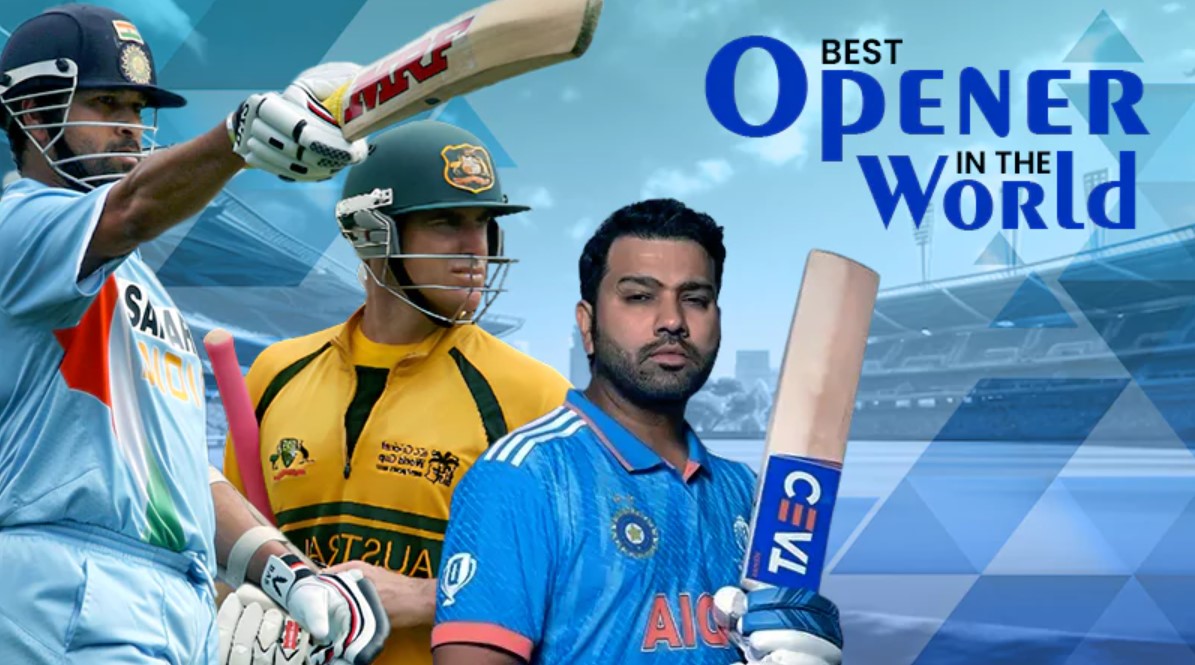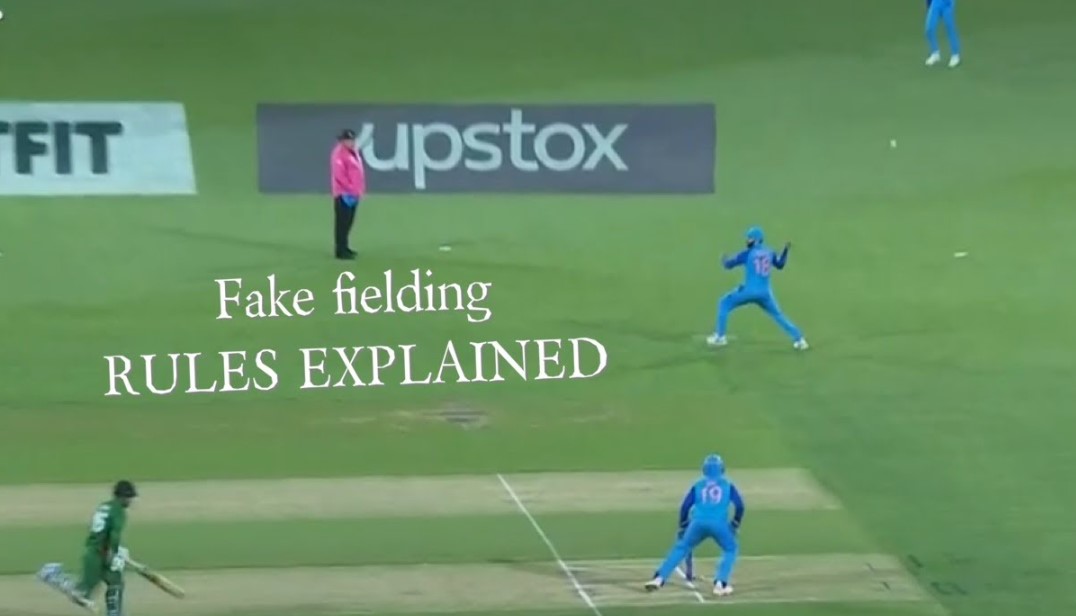Who Is the King of Cricket
Cricket, often referred to as the “Gentleman’s Game,” has captured the imaginations of millions worldwide for centuries. As the sport has evolved from its modest origins in English villages to become a global sensation, numerous players have made an enduring impact on its storied history. The pursuit of determining “Who Is the King of Cricket” has ignited endless debates among fans, experts, and even the cricketing legends themselves.
Cricket, with its rich traditions and complex strategies, has produced legendary figures who have excelled in different eras, formats, and playing conditions. From Sir Don Bradman’s unparalleled batting prowess to Sir Vivian Richards’ dominance with the willow, from Shane Warne’s mesmerizing spin wizardry to Sir Garfield Sobers’ remarkable all-round abilities, cricket has been graced by giants who have redefined the game.
While statistics provide a quantitative measure of a player’s impact, cricket’s charm goes beyond numbers. It’s the moments of brilliance, the underdog stories, the pressure-cooker situations, and the sheer artistry on display that elevate certain players to the status of legends. These moments are etched into the collective memory of cricket fans, creating an emotional connection that transcends statistics.

In the quest to identify the “King of Cricket,” one must consider the ever-changing nature of the game. The evolution of formats, rules, and playing conditions has led to shifts in playing styles and strategies. A player’s greatness is often assessed not just by their individual brilliance but also by their ability to adapt to the demands of the game in different eras.
Cricket enthusiasts have their own personal favorites, often influenced by regional loyalties, generational biases, or playing styles they admire. These discussions and debates about who deserves the title of “King of Cricket” are a testament to the sport’s enduring appeal and the passion it ignites in its followers.
As cricket continues to evolve and new talents emerge, the debate over the “King of Cricket” will likely persist, keeping the legacy of the sport alive and vibrant. Ultimately, cricket’s true royalty lies not in the crowning of a single king but in the collective admiration and reverence for the countless legends who have graced the field and enriched the sport’s heritage.
The Evolution of Cricket
Cricket’s evolution from its humble beginnings in the 16th century to its current status as one of the most-watched sports worldwide is a captivating tale. It’s a journey that has seen the sport transform and adapt to the demands of changing times, from the traditional test matches played over five days to the exhilarating Twenty20 format that has captured the imagination of fans around the globe.
In the early days of cricket, it was a leisurely pastime played on village greens and open fields in England. The game was known for its leisurely pace, elaborate rituals, and its connection to the English aristocracy. Matches could last for days, and the focus was on strategy and endurance rather than fast-paced action.
However, as the sport gained popularity and spread to different parts of the world, it underwent significant changes. The introduction of limited-overs cricket, particularly the One Day Internationals (ODIs) in the 1970s, marked a turning point. These matches provided a shorter and more exciting version of the game, making it accessible to a wider audience.
But perhaps the most significant revolution in cricket came with the inception of Twenty20 (T20) cricket. The T20 format, characterized by its high-scoring, fast-paced nature, and shorter duration, breathed new life into the sport. It became a global phenomenon, attracting new fans and commercial interest. Domestic T20 leagues like the Indian Premier League (IPL) and the Big Bash League (BBL) further propelled cricket’s popularity.

The advent of T20 cricket brought about innovations in batting, bowling, and fielding techniques. Batsmen developed a range of aggressive strokes, bowlers experimented with variations, and fielding standards soared. The game became a spectacle, with fans flocking to stadiums or tuning in from all corners of the world.
Cricket’s evolution hasn’t been limited to just the formats. Technology has played a significant role in officiating, broadcasting, and player performance analysis. The Decision Review System (DRS), ultra-edge technology, and Hawk-Eye have brought more accuracy and fairness to the game.
Moreover, cricket’s globalization has made it a truly international sport. It’s no longer confined to its English roots; it’s played and followed passionately in countries like India, Australia, Pakistan, South Africa, the West Indies, and many others. International competitions like the ICC Cricket World Cup and the ICC T20 World Cup have become sporting extravaganzas, uniting nations and showcasing the spirit of competition.
As cricket continues to evolve, it faces new challenges and opportunities. The sport must balance tradition with innovation, ensuring that it remains appealing to both its loyal followers and a new generation of fans. Whether it’s the grace of a classic cover drive in a test match or the thrill of a last-ball finish in a T20 game, cricket continues to enchant and captivate, promising an exciting future while celebrating its rich history.
Defining the King of Cricket
Defining the “King of Cricket” is a subjective endeavor, one that transcends mere statistics and delves into the realm of personal preference and admiration. This honorary title is not solely determined by an individual’s numerical achievements on the field, but it encompasses a broader spectrum of factors, including their profound impact on the game, their distinctive and charismatic style, and their unparalleled ability to captivate and mesmerize the cricketing world.
The “King of Cricket” isn’t merely the player with the most centuries or wickets; it’s a title that is conferred upon those who have left an indelible mark on the sport. It’s about their ability to transcend boundaries, inspire generations, and become iconic figures not only within their own nation but across the cricketing fraternity.
While statistical records certainly play a part in this assessment, they are just one facet of the overall picture. It’s the unforgettable moments, the match-winning performances under pressure, the elegance of their strokes, the tenacity of their bowling, and the leadership qualities they exhibit that truly define their legacy.

The “King of Cricket” is not bound by time or era. It spans across generations, acknowledging the greatness of players from different epochs and celebrating their contributions to the sport’s rich tapestry. Whether it’s Sir Don Bradman’s unrivaled batting average, Sir Vivian Richards’ intimidating presence at the crease, Sachin Tendulkar’s unparalleled records, or the contemporary brilliance of Virat Kohli or Kane Williamson, each era has witnessed its cricketing monarchs.
Ultimately, the “King of Cricket” is a title that is cherished and debated among fans, pundits, and cricketing legends themselves. It’s a testament to the sport’s ability to produce exceptional talents who transcend the boundaries of nations and time, leaving an everlasting imprint on the hearts of cricket enthusiasts worldwide.
Legendary Cricket Icons
These iconic figures have left an indelible mark on the sport, captivating the hearts of millions with their exceptional skills, charismatic presence, and unmatched contributions to the game’s rich history. In this exploration of cricket’s legendary icons, we delve into the lives, achievements, and lasting legacies of these cricketing luminaries who continue to inspire and resonate with fans across the globe.
Sir Don Bradman: The Invincible
Sir Don Bradman, often referred to as the “Bradman of Cricket” or simply “The Don,” is widely considered the greatest batsman in the history of the sport. Born in 1908 in New South Wales, Australia, Bradman’s impact on cricket was nothing short of extraordinary.
During his illustrious Test career from 1928 to 1948, Bradman amassed an incredible 6,996 runs at a staggering batting average of 99.94. His batting prowess was characterized by impeccable footwork, extraordinary hand-eye coordination, and an unwavering focus at the crease. The Don’s ability to read the game and analyze bowlers set him apart from his contemporaries.
One of the most remarkable phases of Bradman’s career was during the 1930 Ashes series in England. He scored a colossal 974 runs in just seven innings, with four centuries and two double centuries, cementing his place in cricketing folklore. Bradman’s dominance was so overwhelming that the English bowlers devised a strategy known as “Bodyline” during the 1932-33 Ashes series in Australia to counter his brilliance.

His cricketing journey was not without its challenges. Despite facing adversities like the Great Depression and World War II, Bradman’s commitment to the game and his relentless pursuit of excellence remained undeterred. His influence on Australian cricket was immense, and he became a symbol of national pride and resilience.
After retiring from international cricket, Sir Don Bradman continued to contribute to the sport as a cricket administrator and selector. He was knighted in 1949 for his services to cricket and was inducted into the ICC Cricket Hall of Fame in 2009.
Sir Don Bradman’s legacy endures as an embodiment of cricketing excellence, a benchmark against which all future batting greats are measured. His name remains synonymous with unparalleled batting mastery, and his records continue to stand as a testament to his extraordinary talent and unwavering dedication to the sport.
Sachin Tendulkar: The Little Master
Sachin Tendulkar, fondly known as the “Little Master” or “Master Blaster,” is an Indian cricket legend and one of the most celebrated batsmen in the history of the game. Born in Mumbai, India, in 1973, Tendulkar’s cricketing journey began at a tender age, and he made his international debut for India at just 16 years old.
Tendulkar’s incredible technique, impeccable timing, and a vast array of strokes made him a prodigious run-scorer across all formats of the game. With an insatiable appetite for runs, he holds numerous records, including being the highest run-scorer in international cricket.
Throughout his illustrious career spanning from 1989 to 2013, Sachin Tendulkar amassed 15,921 runs in Test cricket and 18,426 runs in One Day Internationals (ODIs). He became the first cricketer to score a double century in ODIs and also holds the record for the most international centuries (100) - a feat considered almost unattainable for many.

Tendulkar’s humility, dedication, and sportsmanship earned him admiration not just in India but also globally. He carried the hopes of a cricket-crazy nation on his shoulders, and his performances during high-pressure matches were legendary. He was instrumental in India’s 2011 ICC Cricket World Cup triumph, fulfilling a dream he had nurtured throughout his career.
Post-retirement, Sachin Tendulkar continued to contribute to cricket in various capacities, including mentoring young talent and serving as a goodwill ambassador for the sport. His impact on cricket and his status as a cultural icon in India remain unparalleled.
Sachin Tendulkar’s legacy is not just about the runs he scored but also about the inspiration he provided to generations of aspiring cricketers. His dedication to the game, his work ethic, and his ability to consistently perform at the highest level for over two decades make him a true cricketing icon and a source of pride for the entire cricketing world.
Vivian Richards: The Master Blaster
Sir Vivian Richards, hailing from the Caribbean island of Antigua, is regarded as one of the most destructive and flamboyant batsmen in the history of cricket. Born in 1952, Richards represented the West Indies during their golden era of dominance in the 1970s and 1980s.
Richards’ aggressive and swashbuckling style of batting revolutionized the game. He instilled fear in opposition bowlers with his commanding presence at the crease and his ability to take on any bowling attack. His attacking mindset was complemented by a solid technique, allowing him to dismantle the best of bowlers with ease.
Known for his swagger and fearless approach, Richards was a key player in the West Indies era of cricketing supremacy. He was a vital cog in the team that won the first two ICC Cricket World Cups in 1975 and 1979.

One of Richards’ most iconic performances came during the 1976 Test series against England. He scored a blistering 829 runs in just four Test matches, averaging a staggering 118.42. His onslaught on the English bowling attack remains etched in cricketing folklore.
Richards’ impact extended beyond his batting prowess. He was an inspirational leader and was later appointed as the captain of the West Indies team. His contributions to the game earned him a knighthood, and he was inducted into the ICC Cricket Hall of Fame in 2000.
Sir Vivian Richards’ legacy in cricket is not just about the runs he scored or the matches he won but also about the way he changed the perception of batting. His fearless and aggressive approach set new standards for batsmen, and his influence on the game can still be seen in the way modern cricketers approach their craft. He remains an iconic figure in the history of cricket, representing the spirit of the West Indies’ dominance during his era.
Sir Garfield Sobers: The All-Round Maestro
Sir Garfield Sobers, born in Barbados in 1936, is widely regarded as one of the greatest all-rounders the game has ever seen. A left-handed batsman and a left-arm bowler, Sobers’ versatility and match-winning abilities made him an irreplaceable asset for the West Indies.
Sobers was an elegant batsman with a wide range of strokes. He could play both defensively and aggressively, adapting his game to suit the situation. In 1958, at just 21 years old, Sobers achieved an extraordinary feat by becoming the first cricketer to score six sixes in a single over during a first-class match.
His bowling was equally lethal, with the ability to swing the ball both ways and deceive batsmen with his subtle variations. Sobers could bowl at a lively pace and had a knack for picking up crucial wickets.
One of Sobers’ most memorable performances came in 1966 during a Test match against Pakistan. He scored an astonishing 365 not out, a record for the highest individual score in Test cricket at that time.

As a captain, Sobers led the West Indies with distinction and played a pivotal role in shaping the team’s success. His leadership and sportsmanship earned him immense respect from his peers and opponents alike.
After retiring from international cricket, Sir Garfield Sobers continued to be involved in the sport as a coach and mentor. He was knighted for his services to cricket and was inducted into the ICC Cricket Hall of Fame in 2009.
Sir Garfield Sobers’ legacy in cricket is not just about his incredible all-round skills but also about the inspiration he provided to generations of cricketers. His ability to dominate both with bat and ball set a benchmark for future all-rounders, and his records continue to be celebrated in the cricketing world. He remains a true icon of the sport.
Modern Cricket Royalty
Virat Kohli, the modern-day maestro of Indian cricket, is renowned for his insatiable hunger for runs and his relentless pursuit of excellence. Born in Delhi, India, in 1988, Kohli’s cricketing journey began at a young age, and he quickly rose through the ranks to become one of the finest batsmen of his generation.
Kohli’s batting is characterized by his impeccable technique, supreme fitness, and the ability to play both conventional and unorthodox shots with equal ease. His cover drives and flicks are a delight to watch, and he has mastered the art of chasing down targets, making him one of the most feared run-chasers in limited-overs cricket.
As the captain of the Indian cricket team, Kohli led by example, infusing his side with passion and determination. Under his leadership, India achieved several historic victories, including the first-ever Test series win in Australia during the 2018-2019 tour.
The consistency of Kohli’s performances has earned him numerous records, including being the fastest batsman to score 8,000, 9,000, 10,000, 11,000, and 12,000 runs in One Day Internationals. His aggressive on-field demeanor and unyielding attitude have endeared him to fans around the world.

In addition to his on-field heroics, Kohli is known for his dedication to fitness and his philanthropic efforts. He has set high standards for fitness in cricket and has inspired many budding cricketers to prioritize their physical well-being.
Kohli’s contributions to Indian cricket and his status as a global cricketing icon make him one of the defining figures of the modern era. His legacy in the sport continues to evolve, and he remains a symbol of excellence and determination for aspiring cricketers worldwide.
Who is The King of Cricket in IPL
Mahendra Singh Dhoni, affectionately known as “MSD” or “Captain Cool,” is a cricketing legend and a revered figure in the IPL. Born in 1981, Dhoni’s rise to prominence came during his tenure as the captain of the Indian cricket team, during which he led India to victory in the 2007 ICC World Twenty20 and the 2011 ICC Cricket World Cup.
In the IPL, Dhoni captained the Chennai Super Kings (CSK) from the inaugural season, forging a strong bond with the team and its fans. Under his astute leadership, CSK won several IPL titles and established itself as one of the most successful franchises in the league.
Dhoni’s batting in the IPL has been equally impactful. Known for his helicopter shot and ability to finish matches with a flourish, he has been a game-changer on countless occasions.
Beyond his on-field heroics, Dhoni’s calm and composed demeanor, even in the most pressure-filled situations, earned him the nickname “Captain Cool.” His leadership and tactical acumen have set new benchmarks in the world of cricket.

Under Dhoni’s captaincy, CSK became known for their consistency and ability to perform under pressure, making him a key figure in IPL history. His influence on the league and his status as one of the greatest captains in IPL history have solidified his place as the “King of Cricket” in the IPL.
Conclusion
In the world of cricket, where legends have graced the field with their extraordinary skills and indomitable spirits, the title of “King of Cricket” remains a matter of subjective opinion. Each era has witnessed its own cricketing royalty, from Sir Don Bradman’s invincibility to Sachin Tendulkar’s mastery and Vivian Richards’ fearless dominance. Modern cricket has its own kings, with Virat Kohli reigning supreme in the international arena and Mahendra Singh Dhoni’s iconic leadership in the IPL.
Cricket, a sport celebrated for its rich history and the heroes it has produced, continues to capture the hearts of millions worldwide. The debate over the “King of Cricket” will endure, a testament to the enduring legacy of this remarkable sport and the extraordinary individuals who have left an indelible mark on it.
FAQ
Who holds the record for the highest Test batting average?
Sir Don Bradman holds the record for the highest Test batting average, an astonishing 99.94. His remarkable consistency and unmatched skill with the bat earned him this unparalleled feat, which remains untouched by any other cricketer to this day.
Who is the youngest cricketer to score a triple century in Test cricket?
West Indian batting prodigy Brian Lara holds the record for being the youngest cricketer to score a triple century in Test cricket. Lara achieved this remarkable feat in 1994 at the age of 24 when he played an incredible innings of 375 runs against England in Antigua.
Who is the highest individual run-scorer in a single IPL season?
The record for the highest individual run-scorer in a single IPL season was held by Chris Gayle. In the 2012 IPL season, playing for the Royal Challengers Bangalore, Gayle scored a remarkable 733 runs, setting new standards of explosive batting and leaving a lasting impact on the league.
Who has the most sixes in T20 cricket?
West Indian power-hitter Chris Gayle holds the record for the most sixes in T20 cricket. Renowned for his explosive batting, Gayle has consistently cleared the boundaries with remarkable ease, amassing a staggering number of sixes in various T20 leagues and international matches.
Who holds the record for the highest number of centuries in One Day Internationals (ODIs)?
Sachin Tendulkar, the legendary Indian batsman, holds the record for the highest number of centuries in ODIs. He has scored 49 centuries in his ODI career, a remarkable achievement that showcases his consistency and batting prowess in the 50-over format.
Who is known as the “God of Cricket”?
Sachin Tendulkar, often referred to as the “God of Cricket,” earned this title due to his immense popularity and unparalleled achievements in the sport. He is considered one of the greatest cricketers of all time and remains an iconic figure in the cricketing world.
Who is the highest run-scorer in Test cricket?
Sachin Tendulkar, the Indian cricket legend, holds the record for the highest run-scorer in Test cricket. He scored a total of 15,921 runs in Test matches during his illustrious career, making him the leading run-scorer in the history of Test cricket.
Who has the most wickets in international cricket?
Sri Lankan spin bowler Muttiah Muralitharan holds the record for the most wickets in international cricket. He took a staggering 1,347 wickets across all formats, showcasing his exceptional bowling skills and longevity in the game.







